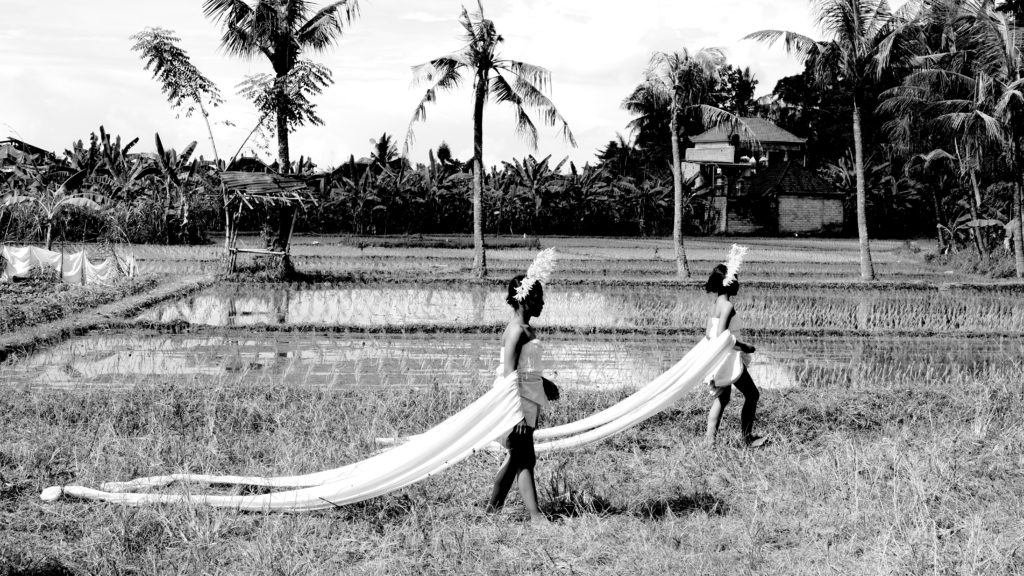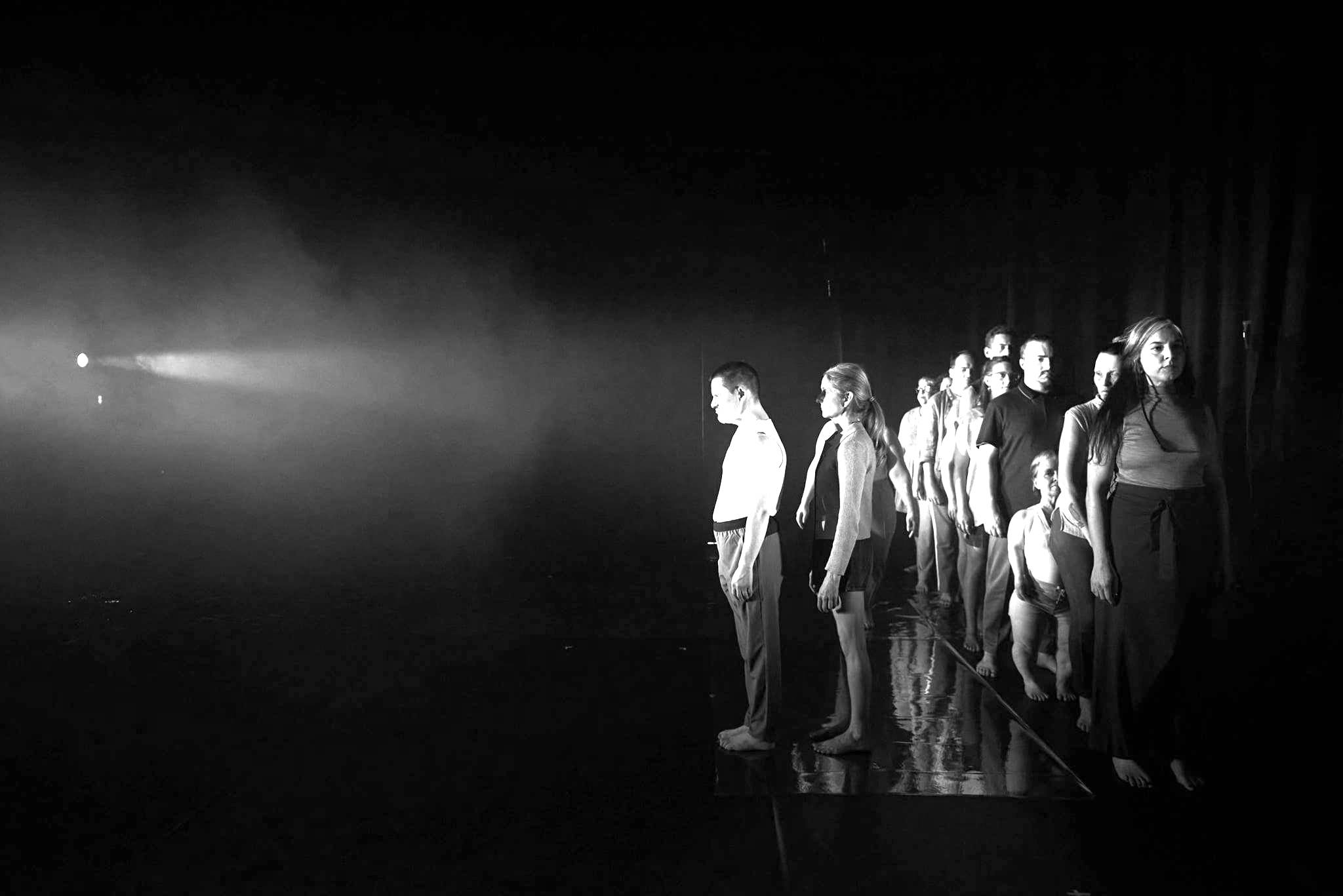THE SEEN & UNSEEN

A mesmerising convergence of contemporary Indonesian dance and physical storytelling, The Seen and Unseen is adapted by Indonesian artist Kamila Andini from her internationally acclaimed film of the same name. Tantri and Tantra are twins born under the full moon. Inseparable in life, the line between reality and the dream world begins to blur as one life ebbs away and the other must begin anew. The Melbourne Critique spoke with director Kamila Andini, about this exciting project.
Kamila, I have spent some time in Indonesia as a performer, so I know the form and beauty of Indonesian dance and performance first hand. But for our readers who may be new to the artform, can you describe the power of this dance form, and its beauty?
In Indonesia, particularly in Bali, dancing and performing is part of the ceremony to communicate with our Gods. Artforms in Indonesia are built within the communities, and each community has its own way to pray and to connect with the Universe using movement.
Dance is never general … it is always personal. Every dancer in every community builds their own discipline, their own rhythm, and their own character. This is important because dancing is about making the connection, nothing else. In Bali, we acknowledge the word ‘Taksu’ means when your body is connecting to the soul of yourself and also to the soul of the Universe. If we have Taksu when we perform, in that moment we believe.
The Seen and Unseen is based on what Bumi Bajra Community does. Their discipline contains movement, music, and literature. I was captivated the first time I saw them putting words, poems, and the breath of life to their bodies. This community works mostly with children, and they believe that art is a culture that needs to be created as early as possible. Their approach is to make children connect to everything that is around them, and then express that through movement, sound, and mostly feelings.
What is the background or concept behind The Seen and Unseen, and what does it wish to communicate?
Since the beginning, The Seen and Unseen is about the process of answering the question of ‘Who I am as an Indonesian?’ I always believe that as someone who is coming from the east, we have our own way to connect and our own way to express. We are never rational about who we are. We believe everything that happens around us just the way it is. ‘Believing’ is something big that I want to feel during the whole process.
Then I read about the philosophy in Bali called ‘Sekala Niskala’ (the seen and unseen) – a very rich philosophy about how Balinese people their lives. They believe that life contains everything that you can see and things you cannot see. We live to hug and embrace all the good and the bad in life, and accept it to create harmony. I think this philosophy talks a lot about who I am as an Indonesian.
Sekala Niskala also talks a lot about duality in life. That is why I play around and express this word alot in the narrative and also visually. Masculinity and femininity, day and night, life and death. And one of the dualities that I explore is about what is realism and surrealism. To be honest in my country, our reality is very surreal. Realism and surrealism sort of live and dance together, just like the good and the bad in life.
Talk to us about the ensemble, and their and your own background in dance and creativity. How does dance fit or form part of “the everyday” in Indonesia?
All the dancers are from the Bumi Bajra community. Bumi Bajra was built within a family of artists by a maestro in Bali, Granoka. One of his oldest daughters, Dayu Ani, is the choreographer of this piece. I think Dayu Ani is one of the most important talents in Indonesia right now – the way she holds her culture in her body and mind. How she continues to discuss and question through the new context of life is very interesting. And what is most important is how she could bring out the world of children to the contemporary works. The six dancers have been dancing with her since they were little. It’s always amazing to me how they accept everything in their heart.
Although I danced when I was a child, I am a filmmaker. I would love to be a dancer, but at some point I know it’s not my medium. My second feature film, The Seen and Unseen, brings me back to this medium. In that film, dancing is the only way to communicate and express what I want to say.
Indonesian people are not very confrontational. Our culture in not very verbal. We teach wisdoms and discuss through traditional arts. Dance, music, traditional performance contains the wisdoms of life, a medium to express our feelings to connect to other things.
Many artists couldn’t describe what they make or what they do, and in our culture we don’t describe, we connect on stage. This is what I like about art. I feel like I don’t need to describe with words, I don’t need to be verbal. And the connection that I want to show in The Seen and Unseen is definitely not something you could describe. And dance is the perfect way to express it.
How do you bridge the divide between film and dance? How does the visual feed into the physical, and vice versa?
Exploring realism and surrealism is something important for this story. When I develop the story of the film, I have a big question that I carry through the whole process: “What is surrealism in the medium of film when film is a medium created to portray reality?” In the film, I tried to keep searching for a way to show this within its reality. But when I started to develop the dance theatre, I was faced with totally different questions:” What is reality in this medium? How can you find reality in this surreal black box world?”
The forever challenge about this piece is it’s never about technicality, it’s always about the context. We couldn’t really design it – we walk with it, and go through the process with it. We question, we feel, we find, we accept.
What is arts greatest power in the world today?
I think what arts give the most to me is how it becomes a window to getting to know ‘others’. Films, performance, art, allow us to get to know other people, other cultures, other stories. The differences of the way they think, work, talk, behave, express. You connect through differences without the perspective of the news. Art makes you understand beyond everything. And when you understand, you will accept. I think in today’s world, understanding and accepting diversity is very important in order to live together in harmony.
For more info, click here.





